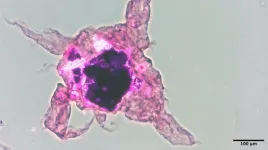Genome Research publishes a Special Issue on Long-read DNA and RNA Sequencing Applications in Biology and Medicine
November 20, 2024 – Genome Research (https://genome.org) publishes a special issue highlighting advances in long-read sequencing applications in biology and medicine.
In this first of two Special Issues guest-edited by Dr. Ana Conesa, Dr. Alexander Hoischen, and Dr. Fritz Sedlazeck, Genome Research publishes a diverse collection of research and review articles highlighting novel applications and developments in long-read sequencing (LRS). Papers in this issue focus on original research offering novel biological and clinical insights gained using long-read DNA and RNA sequencing technologies and other long molecule approaches. The issue offers significant advances in long-read sequencing analysis, including novel methods for genome assembly and annotation, characterization of complex structural variation, quantifying DNA and RNA modification, full-length mRNA isoform resolution, vaccine and gene therapy vector quality control, and bacterial outbreak tracing. Several of the studies are highlighted below.
LRS technologies are expanding our understanding of rare diseases and impacting diagnostic potential of germline testing in the clinic, including characterization of disease-relevant complex genomic rearrangements and structural variants (SVs) (Bilgrav Saether et al. 2024, de Groot et al. 2024, Eisfeldt et al. 2024a, Eisfeldt et al. 2024b, Guitart et al. 2024, Gustafson et al. 2024, Hiatt et al. 2024), cancer-related variants (Gulsuner et al. 2024), aberrant splicing Pacholewska et al. 2024), and transcriptional features linked to tumor progression (Lee et al. 2024).
New telomere-to-telomere and chromosome-level assemblies using long-read sequencing are presented. Several studies highlight the advancements in accuracy and read length in driving telomere-to-telomere and chromosome-level assembly-based analysis methods in humans and various non-human, non-model, and plant species and provide valuable resources to the genomics community, including a new rat reference genome assembly (Li et al. 2024), as well as insights into genome structure and evolution (Byerly et al. 2024, Gardner et al. 2024, Kamath et al. 2024, Volarić et al. 2024). Koren et al. (2024) generated human, tomato, and maize genome assemblies using only Oxford Nanopore Technologies’ long-read sequencing data demonstrating the value of a single-instrument approach for constructing high quality de novo genome assemblies.
Novel long-read sequencing data approaches are presented, including tools enabling visualization of clinically or biologically relevant variant types (De Coster et al. 2024; Zhou et al. 2024; Tesi et al. 2024) and chromatin structure and methylation (Gocuk et al. 2024; Jha et al. 2024, Teng et al. 2024). Additionally, increased read-throughput and lowering costs are enabling large-scale studies to capture transcriptome variability, including in the house mouse brain (Zhang et al. 2024) and multiple other tissues (Adams and Vollmers 2024).
This issue also reviews targeted sequencing strategies that leverage existing long-read technologies (Iyer et al. 2024), the specific challenges involved in identifying and quantifying mRNA terminal ends with LRS technologies (Calvo-Roitberg et al. 2024), and advances in single-cell and spatial long-read sequencing (Belchikov et al. 2024).
This special issue provides important insights into how advances in long-read sequencing technology are driving impactful scientific discoveries in numerous areas of biology and medicine, technological advances for studying complex regions of the genome, and reflects the broad interest and discoveries in genome science enabled by this technology. A second issue of LRS related studies is planned to be published early next year.
References
Adams M, Vollmers C. 2024. Generation and analysis of a mouse multi-tissue genome annotation atlas. Genome Res. doi:10.1101/gr.279217.124
Belchikov N, Hsu J, Li XJ, Jarroux J, Hu W, Joglekar A, Tilgner HU. 2024. Understanding isoform expression by pairing long-read sequencing with single-cell and spatial transcriptomics. Genome Res. doi:10.1101/gr.279640.124
Bilgrav Saether K, Eisfeldt J, Bengtsson JD, Lun MY, Grochowski CM, Mahmoud M, Chao H-T, Rosenfeld JA, Liu P, Ek M, et al. 2024. Leveraging the T2T assembly to resolve rare and pathogenic inversions in reference genome gaps. Genome Res. doi:10.1101/gr.279346.124
Byerly PA, von Thaden A, Leushkin E, Hilgers L, Liu S, Winter S, Schell T, Gerheim C, Hamadou AB, Greve C, et al. 2024. Haplotype-resolved genome and population genomics of the threatened garden dormouse in Europe. Genome Res. doi:10.1101/gr.279066.124
Calvo-Roitberg E, Daniels RF, Pai AA. 2024. Challenges in identifying mRNA transcript starts and ends from long-read sequencing data. Genome Res. doi:10.1101/gr.279559.124
De Coster W, Höijer I, Bruggeman I, D’Hert S, Melin M, Ameur A, Rademakers R. 2024. Visualization and analysis of medically relevant tandem repeats in nanopore sequencing of control cohorts with pathSTR. Genome Res. doi:10.1101/gr.279265.124
de Groot N, van der Wiel M, Le NG, de Groot NG, Bruijnesteijn J, Bontrop RE. 2024. Unravelling the architecture of major histocompatibility complex class II haplotypes in rhesus macaques. Genome Res. doi:10.1101/gr.278968.124
Diensthuber G, Pryszcz LP, Llovera L, Lucas MC, Delgado-Tejedor A, Cruciani S, Roignant J-Y, Begik O, Novoa EM. 2024. Enhanced detection of RNA modifications and read mapping with high-accuracy nanopore RNA basecalling models. Genome Res. doi:10.1101/gr.278849.123
Eisfeldt J, Ameur A, Lenner F, de Boer ETB, Ek M, Wincent J, Vaz R, Ottosson J, Jonson T, Ivarsson S, et al. 2024a. A national long-read sequencing study on chromosomal rearrangements uncovers hidden complexities. Genome Res. doi:10.1101/gr.279510.124
Eisfeldt J, Higginbotham EJ, Lenner F, Howe J, Fernandez BA, Lindstrand A, Scherer SW, Feuk L. 2024b. Resolving complex duplication variants in autism spectrum disorder using long-read genome sequencing. Genome Res. doi:10.1101/gr.279263.124
Gardner C, Chen J, Hadfield C, Lu Z, Debruin D, Zhan Y, Donlin MJ, Ahn TH, Lin Z. 2024. Chromosome-level subgenome-aware de novo assemblyprovides insight into Saccharomyces bayanus genome divergence after hybridization. Genome Res. doi:10.1101/gr.279364.124
Gocuk SA, Lancaster J, Su S, Jolly JK, Edwards TL, Hickey DG, Ritchie ME, Blewitt ME, Ayton LN, Gouil Q. 2024. Measuring X-chromosome inactivation skew for X-linked diseases with adaptive nanopore sequencing. Genome Res. doi:10.1101/gr.279396.124
Gomez-Simmonds A, Annavajhala MK, Seeram D, Hokunson TW, Park H, Uhlemann A-C. 2024. Genomic epidemiology of carbapenem-resistant enterobacterales at a New York city hospital over a 10-year period reveals complex plasmid-clone dynamics and evidence for frequent horizontal transfer of blaKPC. Genome Res. doi:10.1101/gr.279355.124
Guitart X, Porubsky D, Yoo D, Dougherty ML, Dishuck PC, Munson KM, Lewis AP, Hoekzema K, Knuth J, Chang S, et al. 2024. Independent expansion, selection, and hypervariability of the TBC1D3 gene family in humans. Genome Res. doi:10.1101/gr.279299.124
Gulsuner S, AbuRayyan A, Mandell JB, Lee MK, Bernier GV, Norquist BM, Pierce SB, King M-C, Walsh T. 2024. Long-read DNA and cDNA sequencing identify cancer-predisposing deep intronic variation in tumor-suppressor genes. Genome Res. doi:10.1101/gr.279158.124
Gustafson JA, Gibson SB, Damaraju N, Zalusky MPG, Hoekzema K, Twesigomwe D, Yang L, Snead AA, Richmond PA, De Coster W, et al. 2024. High-coverage nanopore sequencing of samples from the 1000 Genomes Project to build a comprehensive catalog of human genetic variation. Genome Res.doi:10.1101/gr.279273.124
Hiatt SM, Lawlor JMJ, Handley LH, Latner DR, Bonnstetter ZT, Finnila CR, Thompson ML, Boston LB, Williams M, Nunez IR, et al. 2024. Longread genome sequencing and variant reanalysis increase diagnostic yield in neurodevelopmental disorders. Genome Res. doi:10.1101/gr.279227.124
Iyer SV, Goodwin S, McCombie WR. 2024. Leveraging the power of long reads for targeted sequencing. Genome Res. doi:10.1101/gr.279168.124
Jagannatha P, Tankka AT, Lorenz DA, Yu T, Yee BA, Brannan KW, Zhou CJ, Underwood JG, Yeo GW. 2024. Long-read Ribo-STAMP simultaneously measures transcription and translation with isoform resolution. Genome Res. doi:10.1101/gr.279176.124
Jha A, Bohaczuk SC, Mao Y, Ranchalis J, Mallory BJ, Min AT, Hamm MO, Swanson E, Dubocanin D, Finkbeiner C, et al. 2024. DNA-m6A calling and integrated long-read epigenetic and genetic analysis with fibertools. Genome Res. doi:10.1101/gr.279095.124
Kamath SS, Bindra M, Pal D, Jain C. 2024. Telomere-to-telomere assembly by preserving contained reads. Genome Res. doi:10.1101/gr.279311.124
Koren S, Bao Z, Guarracino A, Ou S, Goodwin S, Jenike KM, Lucas J, McNulty B, Park J, Rautiainen M, et al. 2024. Gapless assembly of complete human and plant chromosomes using only nanopore sequencing. Genome Res. doi:10.1101/gr.279334.124
Lee J, Snell EA, Brown J, Booth CE, Banks RE, Turner DJ, Vasudev NS, Lagos D. 2024. Long-read RNA sequencing of archival tissues reveals novel genes and transcripts associated with clear cell renal cell carcinoma recurrence and immune evasion. Genome Res. doi:10.1101/gr.278801.123
Li K, Smith ML, Chris Blazier J, Kochan KJ, Wood JMD, Howe K, Kwitek AE, Dwinell MR, Chen H, Ciosek JL, et al. 2024. Construction and evaluation of a new rat reference genome assembly, GRCr8, from long reads and long-range scaffolding. Genome Res. doi:10.1101/gr.279292.124
Liu X, Ni Y, Ye L, Guo Z, Tan L, Li J, Yang M, Chen S, Li R. 2024. Nanopore strand-specific mismatch enables de novo detection of bacterial DNA modifications. Genome Res. doi:10.1101/gr.279012.124
Lohde M, Wagner GE, Dabernig-Heinz J, Viehweger A, Braun SD, Monecke S, Diezel C, Stein C, Marquet M, Ehricht R, et al. 2024. Accurate bacterial outbreak tracing with Oxford Nanopore sequencing and reduction of methylation-induced errors. Genome Res. doi:10.1101/gr.278848.123
Pacholewska A, Lienhard M, Brüggemann M, Hänel H, Bilalli L, Königs A, Heß F, Becker K, Köhrer K, Kaiser J, et al. 2024. Long-read transcriptome sequencing of CLL and MDS patients uncovers molecular effects of SF3B1 mutations. Genome Res. doi:10.1101/gr.279327.124
Ritter AJ, Draper JM, Vollmers C, Sanford JR. 2024. Long-read subcellular fractionation and sequencing reveals the translational fate of full-length mRNA isoforms during neuronal differentiation. Genome Res.doi:10.1101/gr.279170.124
Slizovskiy IB, Bonin N, Bravo JE, Ferm PM, Singer J, Boucher C, Noyes NR. 2024. Factors impacting target-enriched long-read sequencing of resistomes and mobilomes. Genome Res. doi:10.1101/gr.279226.124
Teng H, Stoiber M, Bar-Joseph Z, Kingsford C. 2024. Detecting m6A RNA modification from nanopore sequencing using a semisupervised learning framework. Genome Res. doi:10.1101/gr.278960.124
Tesi N, Salazar A, Y, van der Lee S, Hulsman M, Knoop L, Wijesekera S, Krizova J, Schneider A-F, Pennings M, et al. 2024. Characterizing tandem repeat complexities across long-read sequencing platforms with TREAT and otter. Genome Res. doi:10.1101/gr.279351.124
Volarić M, Despot-Slade E, Veseljak D, Mravinac B, MeštrovićN. 2024. Longread genome assembly of the insect model organism Tribolium castaneum reveals spread of satellite DNA in gene-rich regions by recurrent burst events. Genome Res. doi:10.1101/gr.279225.124
Zeglinski K, Montellese C, Ritchie ME, Alhamdoosh M, Vonarburg C, Bowden R, Jordi M, Gouil Q, Aeschimann F, Hsu A. 2024. An optimized protocol for quality control of gene therapy vectors using nanopore direct RNA sequencing. Genome Res. doi:10.1101/gr.279405.124
Zhang W, Guenther A, Gao Y, Ullrich K, Huettel B, Ahmad A, Duan L, Wei K, Tautz D. 2024. Full-length RNA transcript sequencing traces brain isoform diversity in house mouse natural populations. Genome Res.doi:10.1101/gr.279166.124
Zhou Y, Song L, Li H. 2024. Full-resolution HLA and KIR gene annotations for human genome assemblies. Genome Res. doi:10.1101/gr.278985.124
###
Media Contacts:
Interested reporters may obtain copies of the manuscript via email from Tara Bonet-Black, Administrative Assistant, Genome Research (bonetbl@cshl.edu).
About Genome Research:
Launched in 1995, Genome Research (www.genome.org) is an international, continuously published, peer-reviewed journal that focuses on research that provides novel insights into the genome biology of all organisms, including advances in genomic medicine. Among the topics considered by the journal are genome structure and function, comparative genomics, molecular evolution, genome-scale quantitative and population genetics, proteomics, epigenomics, and systems biology. The journal also features exciting gene discoveries and reports of cutting-edge computational biology and high-throughput methodologies.
About Cold Spring Harbor Laboratory Press:
Cold Spring Harbor Laboratory Press is an internationally renowned publisher of books, journals, and electronic media, located on Long Island, New York. Since 1933, it has furthered the advance and spread of scientific knowledge in all areas of genetics and molecular biology, including cancer biology, plant science, bioinformatics, and neurobiology. The Press is a division of Cold Spring Harbor Laboratory, an innovator in life science research and the education of scientists, students, and the public. For more information, visit our website at http://cshlpress.org.
Genome Research issues press releases to highlight significant research studies that are published in the journal.
END






